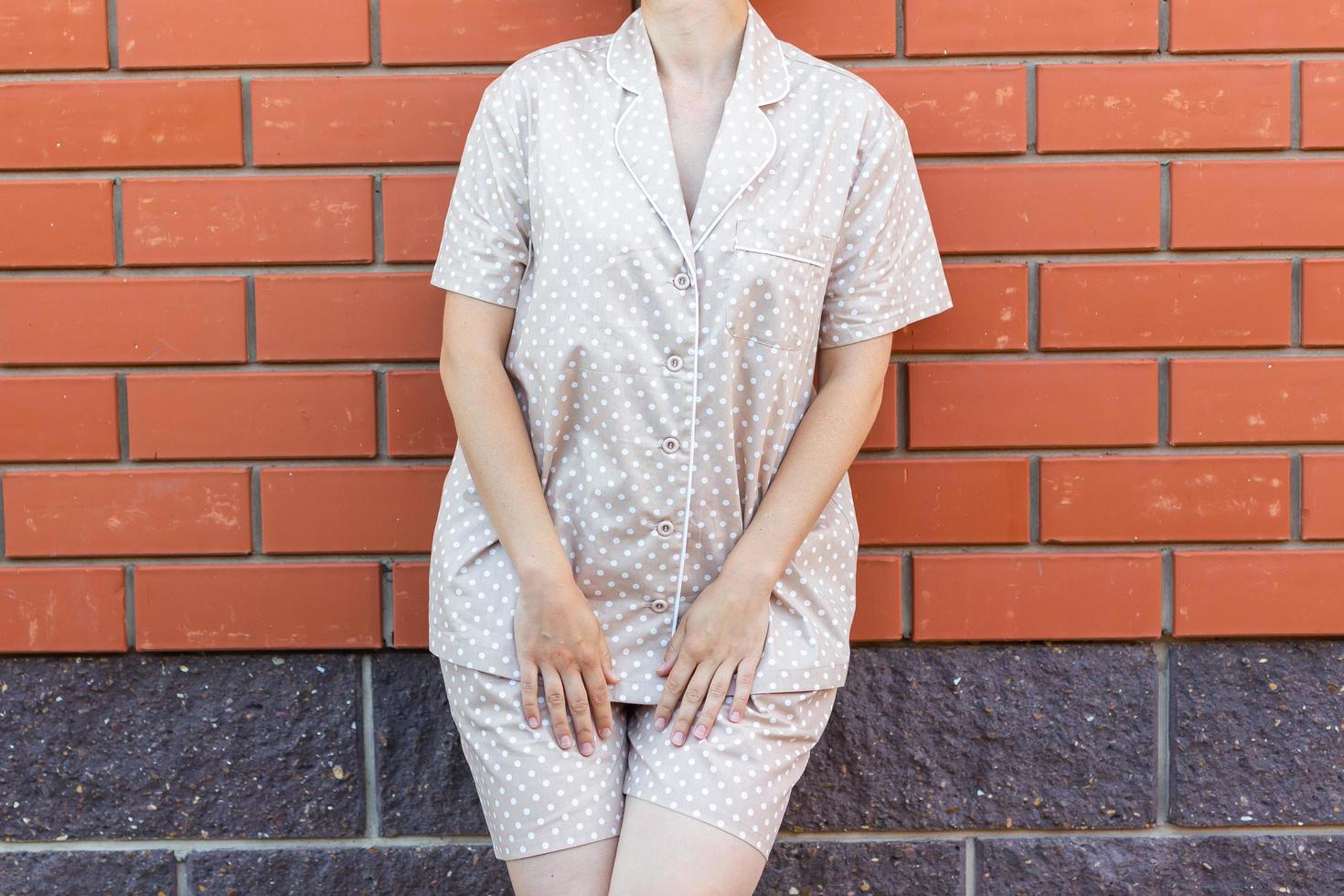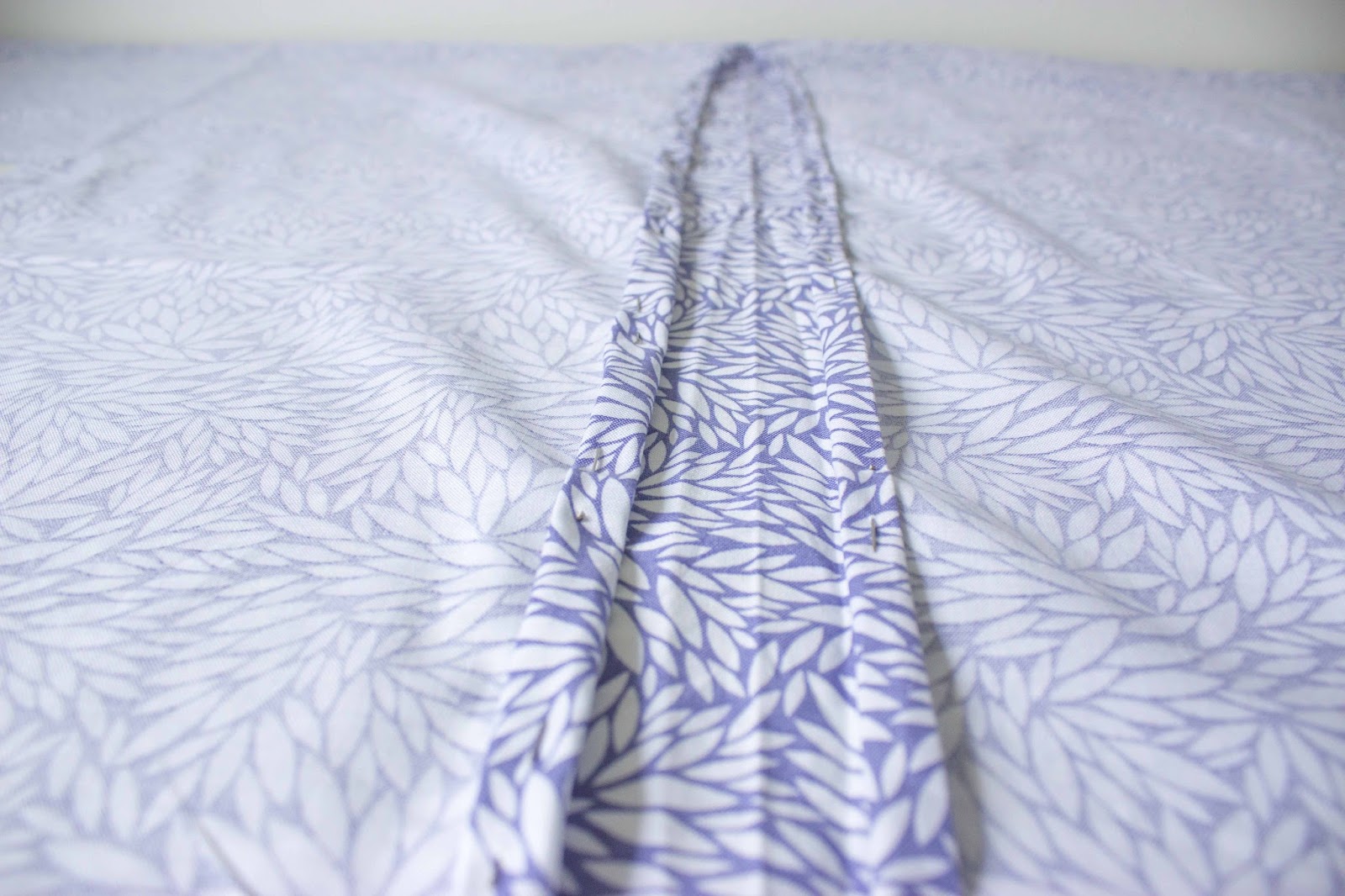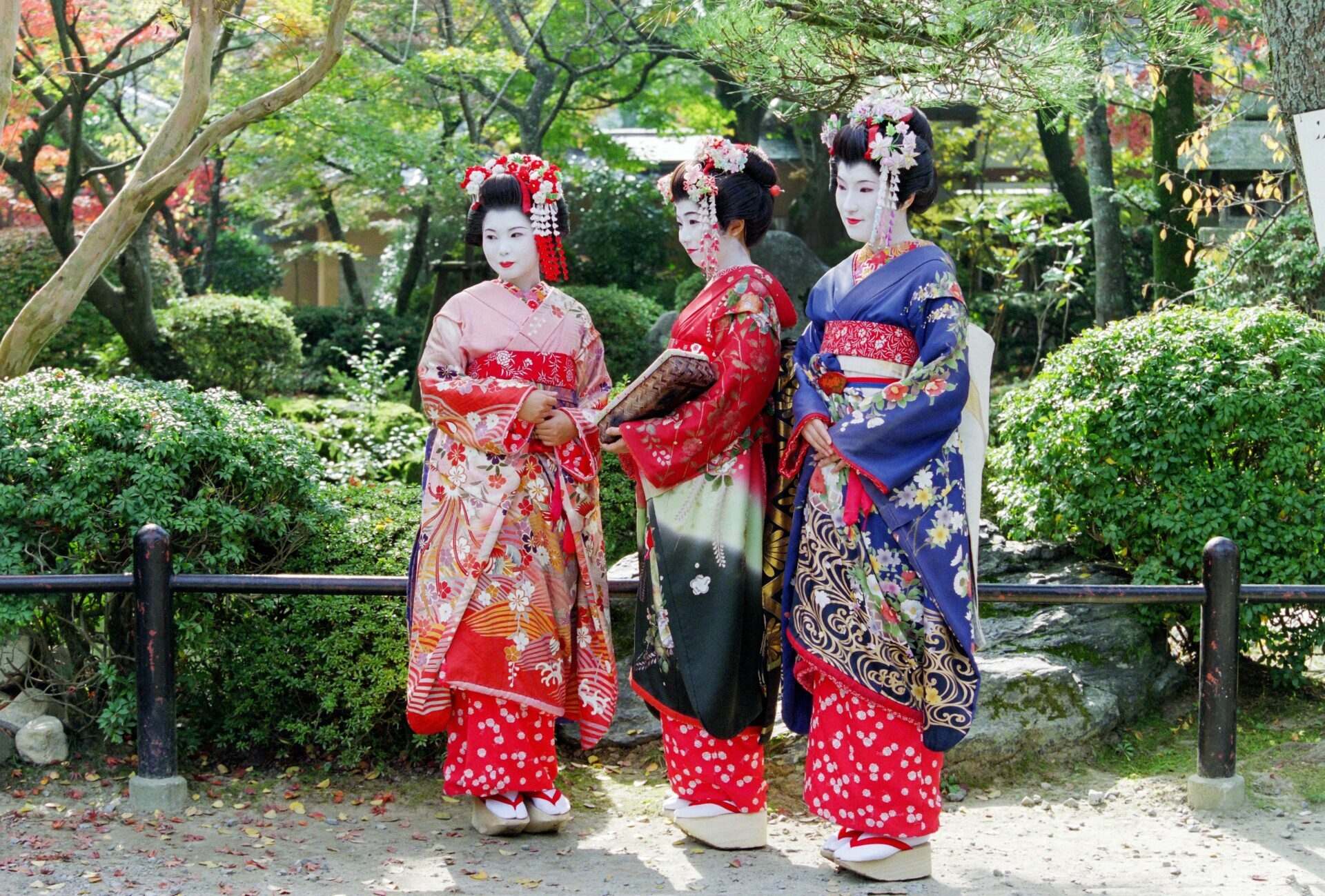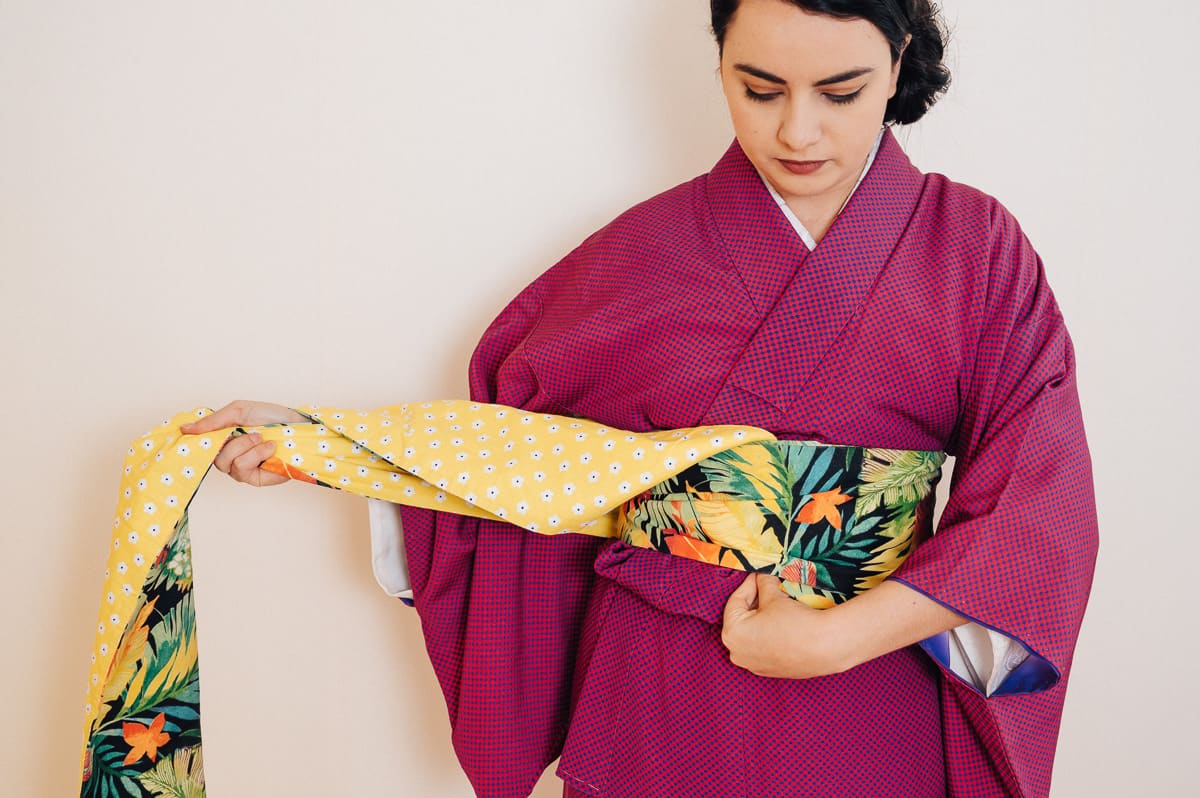Home>Latest Posts>What To Make With Kimono Fabric
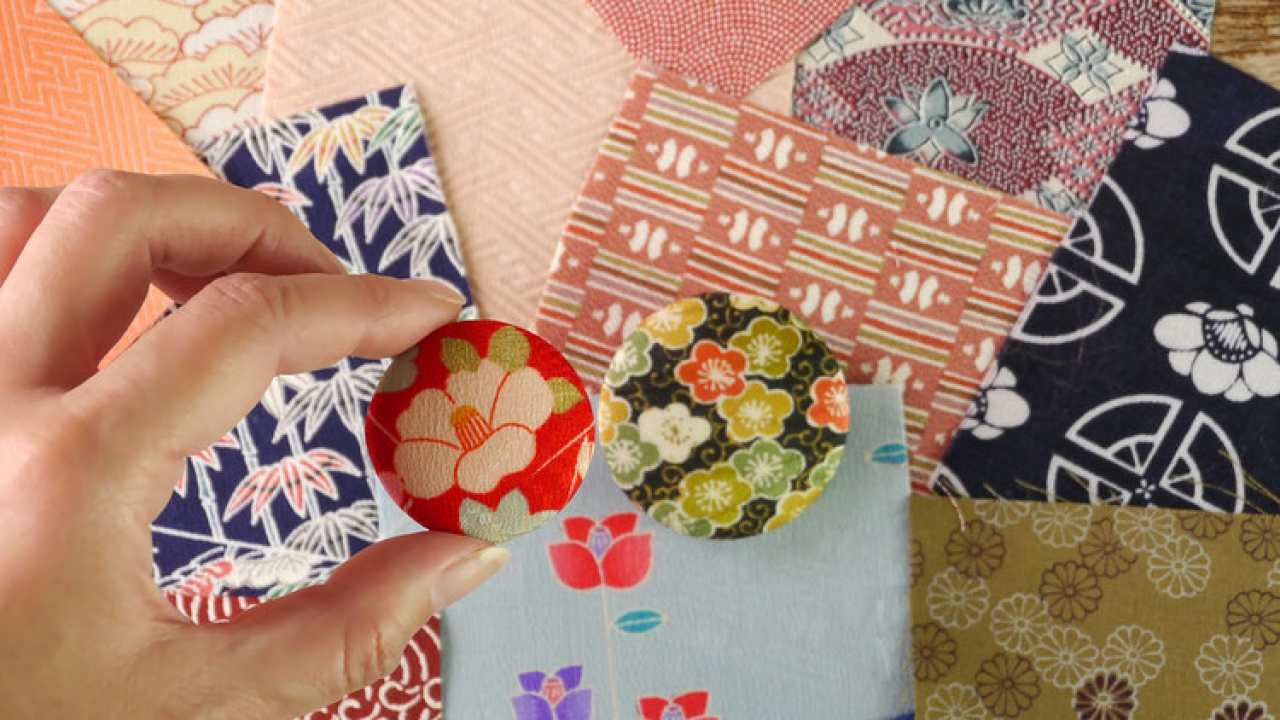

Latest Posts
What To Make With Kimono Fabric
Modified: August 2, 2023
Discover beautiful and unique ideas for women's clothing and accessories using exquisite kimono fabric. Create stylish pieces and express your individuality with this versatile material.
(Many of the links in this article redirect to a specific reviewed product. Your purchase of these products through affiliate links helps to generate commission for Under-tec.com, at no extra cost. Learn more)
Table of Contents
Introduction
The world of fashion is a treasure trove of diverse and exquisite fabrics, each with its own unique history and charm. And one such fabric that holds a special place in the hearts of fashion enthusiasts is kimono fabric. Originating from Japan, kimono fabric has gained global popularity for its rich cultural heritage and stunning patterns.
Historically, the kimono was the traditional garment worn by both men and women in Japan. It is a T-shaped robe with wide sleeves and a wraparound design, often adorned with intricate motifs and vibrant colors. The fabric used to create this iconic attire is known for its exceptional quality and craftsmanship.
Today, kimono fabric has transcended its traditional roots and can be found in various contemporary forms, including clothing, accessories, home décor, and crafts. Its versatility and aesthetic appeal make it a favorite choice for those seeking to infuse their style with a touch of elegance and culture.
In this article, we will delve into the world of kimono fabric, exploring its historical background, distinctive characteristics, and the care it requires to maintain its beauty over time. We will also provide a range of inspiring DIY ideas and projects that will allow you to unlock the full potential of this exquisite fabric.
Whether you have a fondness for traditional Japanese art forms or simply appreciate the beauty of fine textiles, this article will guide you on how to incorporate kimono fabric into your daily life. So, let’s embark on this fascinating journey and unlock the endless possibilities of kimono fabric!
Historical Background of Kimono Fabric
The history of kimono fabric dates back centuries and is deeply intertwined with Japanese culture and traditions. The word “kimono” itself means “thing to wear” in Japanese, reflecting the significance of this garment in everyday life.
Kimono fabric has its roots in the Heian Period (794-1185) when a precursor of the kimono called kosode emerged. During this time, the prominent class, including nobles and aristocrats, adorned themselves with kosode made from luxurious fabrics such as silk, which were often hand-painted with intricate designs and motifs.
As Japan entered the Edo Period (1603-1868), the popularity of the kimono continued to rise. The distinctive features of the kimono, such as its straight seams, wide sleeves, and use of obi belts, became more standardized. The patterns and motifs on kimono fabric also became more elaborate and symbolic, reflecting the wearer’s social status and personal aesthetic.
During the Meiji Period (1868-1912), Japan went through a wave of modernization and Westernization. Western-style clothing became more prevalent, and the kimono started to lose its status as everyday attire. However, it remained a symbol of national identity and cultural heritage.
In recent times, there has been a resurgence of interest in kimono fabric and its traditional craftsmanship. Designers and artists are incorporating kimono fabrics into contemporary fashion and art, blending the old with the new, and celebrating the rich history and artistry of these fabrics.
The intricate patterns, vibrant colors, and delicate textures of kimono fabric continue to captivate people around the world. Each fabric tells a story, representing Japanese folklore, nature, or historical events. The craftsmanship involved in creating kimono fabric is meticulous, with techniques like hand-dyeing, embroidery, and weaving passed down through generations.
Today, kimono fabric is cherished not only in Japan but also globally. It is treasured for its beauty, elegance, and the connection it provides to Japanese culture and tradition. Whether worn as a traditional garment, repurposed into modern apparel, or used as decorative accents in homes, kimono fabric remains an enduring symbol of Japan’s artistic legacy.
From the rich history and cultural significance to the stunning craftsmanship and timeless beauty, kimono fabric truly represents the essence of Japanese tradition and artistry. Understanding its historical background allows us to appreciate the beauty and significance of this beloved fabric.
Characteristics of Kimono Fabric
Kimono fabric is renowned for its unique qualities that set it apart from other textiles. From the choice of materials to the intricate patterns and exquisite craftsmanship, here are some key characteristics that make kimono fabric so special.
1. Fabric Materials: Traditional kimono fabric is primarily made from silk, which is known for its lustrous sheen, softness, and durability. Silk allows for vibrant color dyeing and intricate weaving techniques. However, modern kimono fabrics may also incorporate synthetic fibers or blends to enhance affordability and ease of care.
2. Intricate Patterns: One of the most captivating aspects of kimono fabric is its elaborate and symbolic patterns. These patterns can represent various elements of nature, historical events, or traditional motifs. Common motifs include cherry blossoms, cranes, waves, and geometric designs. Each pattern holds its own meaning and adds a layer of storytelling to the fabric.
3. Seasonality: Kimono fabrics are curated to match specific seasons. For example, lighter and breathable fabrics like silk and cotton are used for summer kimono, while heavier and warmer fabrics like wool and brocade are used for winter kimono. The choice of fabric helps regulate body temperature and ensures comfort throughout the seasons.
4. Obi Design: The obi, a sash that is worn around the waist of the kimono, is an essential component that adds a touch of elegance to the overall look. Obi fabrics are often made from luxurious materials such as silk or brocade and feature intricate embroidery or woven designs. The obi can be wide or narrow, depending on the occasion and the wearer’s personal style.
5. Fine Craftsmanship: Creating kimono fabric involves a high level of craftsmanship and attention to detail. Traditional techniques such as hand-dyeing (known as yuzen), hand-painting (known as tsujigahana), and intricate embroidery are used to bring the patterns to life. These techniques require years of practice and expertise, making each piece of kimono fabric truly unique.
6. Versatility: While kimono fabric is traditionally used to make kimonos, its versatility extends beyond traditional attire. The fabric can be repurposed into fashionable clothing items like dresses, tops, skirts, and scarves. It can also be used for accessories, home decor items, and crafts, offering endless possibilities for creative expression.
Kimono fabric’s distinctive characteristics make it a beloved and sought-after textile around the world. Its luxurious feel, rich patterns, and cultural significance create a tapestry of beauty and heritage. Whether worn in its traditional form or incorporated into contemporary designs, kimono fabric continues to captivate and inspire fashion enthusiasts and art lovers alike.
Care and Maintenance of Kimono Fabric
Kimono fabric is a beautiful and delicate material that requires proper care to maintain its beauty and longevity. Whether you own a vintage kimono or a modern garment made from kimono fabric, here are some essential tips for caring for and preserving your treasured pieces.
1. Storage: When not in use, it’s important to store kimono fabric in a cool, dry, and well-ventilated area. Avoid exposing it to direct sunlight or damp environments, as this can fade the colors and cause mold or mildew growth. Be sure to fold the fabric carefully to prevent creases and store it in a breathable garment bag or acid-free tissue paper.
2. Gentle Cleaning: Regularly remove any dust or debris from the kimono fabric using a soft-bristle brush or a lint roller. For spot cleaning, use a damp cloth or sponge with mild detergent or a specialized silk cleaner. Gently dab at the stained area without rubbing or scrubbing vigorously. Rinse the fabric thoroughly with cool water and allow it to air dry.
3. Professional Cleaning: Due to their delicate nature, kimono fabrics are best entrusted to professional dry cleaners who specialize in handling silk and delicate textiles. They have the expertise to clean and preserve the fabric without causing damage. Inform the cleaner of any specific stains or areas of concern, and ensure they understand the proper handling of kimono fabric.
4. Avoid Harsh Chemicals: Avoid using bleach or any harsh cleaning chemicals on kimono fabric, as they can cause discoloration and damage the fibers. Stick to mild, pH-neutral detergents specifically formulated for silk or delicate fabrics.
5. Protection from Insects: Protect kimono fabric from damage caused by insects such as moths. Store the fabric with cedar blocks or sachets containing dried lavender, which act as natural repellents. Alternatively, you can use garment storage bags specifically designed to prevent insect infestation.
6. Handling with Care: When wearing or handling kimono fabric, be mindful of sharp objects or accessories that could snag or tear the delicate fabric. Avoid wearing heavy jewelry or accessories that may cause friction or damage.
7. Preservation Techniques: Consider professional preservation techniques, such as framing or mounting, for exceptionally beautiful or sentimental kimono fabrics. This not only helps to protect the fabric but also turns it into a stunning piece of art for display.
By following these care and maintenance tips, you can ensure that your kimono fabric pieces remain vibrant and beautiful for years to come. It is essential to treat these exquisite fabrics with the respect and care they deserve to preserve their unique charm and cultural heritage.
Kimono Fabric DIY Ideas
Kimono fabric is not only meant for traditional attire but also offers endless possibilities for creative DIY projects. Whether you have a vintage kimono or scraps of kimono fabric, here are some inspiring ideas to repurpose and showcase the beauty of this exquisite textile.
1. Kimono Clutch: Transform a small piece of kimono fabric into a stylish clutch or pouch. Cut a rectangle of fabric and fold it in half. Sew the sides together, leaving the top open. Add a zipper or a button closure for a finishing touch. This versatile accessory can add a touch of elegance to any outfit.
2. Kimono Scarf: Cut a long strip of kimono fabric and hem the edges to create a beautiful scarf. The vibrant patterns and soft texture of the fabric will make a statement piece for any ensemble.
3. Kimono-Inspired Headband: Use a wide strip of kimono fabric to create a unique headband. Fold the fabric in half and sew the edges together. Attach elastic or a fabric band at the back for a comfortable fit. This accessory will add a touch of Japanese flair to your everyday look.
4. Kimono Wall Art: Frame a piece of kimono fabric as a stunning piece of wall art. Choose a focal point of the fabric with a captivating pattern or motif. Stretch and mount it on a canvas or insert it into a picture frame. Hang it on your wall to showcase the beauty of the fabric.
5. Kimono Coasters: Cut small squares or circles of kimono fabric and attach them to cork or felt coasters. This simple DIY project will add a touch of elegance to your coffee table or dining area.
6. Kimono Notebook Cover: Create a unique notebook cover by wrapping a plain notebook in a piece of kimono fabric. Glue or sew the fabric around the notebook, making sure to neatly cover the front, spine, and back. You can also add decorative elements like ribbons or beads for an extra touch of charm.
7. Kimono Throw Pillow: Sew or glue together kimono fabric pieces to create a beautiful pillow cover. Mix and match different patterns and colors to add a pop of Japanese-inspired style to your home decor.
These DIY ideas offer just a glimpse of the creative possibilities that kimono fabric holds. The versatility and beauty of this textile make it perfect for incorporating into various crafts and projects. So, unleash your creativity and bring the elegance of kimono fabric into your everyday life.
Kimono Fabric Accessories
Kimono fabric is not limited to clothing alone. Its vibrant patterns, luxurious materials, and rich cultural heritage make it the perfect choice for creating unique and stylish accessories. From jewelry to bags, here are some fantastic ways to incorporate kimono fabric into your accessory collection.
1. Kimono Fabric Earrings: Create stunning statement earrings by using small pieces of kimono fabric. Cut out desired shapes like circles, squares, or flowers from the fabric. Attach earring hooks or posts to the fabric using glue or by sewing them together. These vibrant and lightweight earrings will add a touch of Japanese elegance to any outfit.
2. Kimono Fabric Scarf Belt: Transform a long piece of kimono fabric into a stylish scarf belt to cinch in your waist or add flair to a simple dress. Wrap the fabric around your waist, tying it in a bow or knot to secure it. This accessory adds a unique touch to any ensemble.
3. Kimono Fabric Hair Accessories: Utilize small scraps of kimono fabric to create beautiful hair accessories. Make a hairband by wrapping the fabric around an elastic band and securing it with glue or sewing. Alternatively, create fabric flower clips by cutting out flower shapes, layering them, and attaching them to hair clips or headbands.
4. Kimono Fabric Clutch: Repurpose leftover kimono fabric into a unique clutch. Cut out a rectangle of fabric, fold it in half, and sew the sides together. Add a zipper or a snap button for closure. This chic accessory is perfect for special occasions or evenings out.
5. Kimono Fabric Tote Bag: Get creative and sew a spacious tote bag using kimono fabric. Choose a vibrant pattern for the exterior and a contrasting fabric for the lining. Add sturdy straps and pockets to make it functional and stylish. This eye-catching bag will surely turn heads wherever you go.
6. Kimono Fabric Brooch: Cut small pieces of kimono fabric into shapes like leaves, flowers, or butterflies, and attach them to a brooch pin. This allows you to create unique and customizable brooches that can be added to blazers, cardigans, or hats for a touch of elegance.
7. Kimono Fabric Ribbon: Cut thin strips of kimono fabric and use them as unique decorative ribbons. Wrap them around gift boxes, tie them onto hair accessories, or use them for embellishing home decor items. These colorful fabric ribbons add a special touch to any project or gift.
By incorporating kimono fabric into your accessory collection, you can add a touch of Japanese elegance and cultural heritage to your style. From earrings to bags, the possibilities are endless when it comes to creating unique and eye-catching accessories with kimono fabric.
Kimono Fabric Home Decor
Kimono fabric is not only reserved for fashion and accessories; it can also bring a touch of elegance and cultural charm to your home decor. From decorative accents to functional items, here are some inspiring ideas to incorporate kimono fabric into your interior design.
1. Kimono Fabric Wall Hangings: Frame or stretch a piece of kimono fabric as a captivating wall hanging. Choose a fabric with a striking pattern or motif that complements your decor. Hang it in a prominent spot to add a touch of Japanese aesthetic to your living space.
2. Kimono-inspired Throw Pillows: Transform plain throw pillows into stunning pieces of art by covering them with kimono fabric. Cut the fabric to size and sew it onto the pillow covers. Mix and match different patterns to create an eye-catching display on your couch or bed.
3. Kimono Table Runner: Add a unique touch to your dining table by using kimono fabric as a table runner. Cut a long strip of fabric and hem the edges. Lay it across the center of your table to instantly elevate your dining space with a dose of Japanese flair.
4. Kimono Fabric Upholstery: Give old furniture a fresh new look by reupholstering it with kimono fabric. Whether it’s a chair, ottoman, or headboard, covering furniture with kimono fabric can create a statement piece that showcases your love for Japanese culture and textiles.
5. Kimono Fabric Curtains: Elevate your windows with custom-made curtains using kimono fabric. Select a design that complements your existing color scheme and decor. The vibrant patterns and luxurious texture of the fabric will add a unique focal point to your space.
6. Kimono Fabric Lanterns: Create soft and ambient lighting by crafting lanterns using kimono fabric. Cut the fabric into panels and attach them to a wire frame. Place battery-powered LED lights inside the lantern for a cozy and enchanting atmosphere.
7. Kimono Fabric Wall Art: Get creative and use small pieces of kimono fabric to create a collage or mosaic wall art. Cut the fabric into various shapes and arrange them on a canvas or wooden panel using glue or adhesive. This unique artwork will become a conversation piece in your home.
Incorporating kimono fabric into your home decor allows you to embrace the beauty and cultural significance of this unique textile. From wall hangings to upholstery, these ideas will infuse your living space with Japanese elegance and create a truly personalized and inviting atmosphere.
Kimono Fabric Clothing
Kimono fabric holds a special place in the world of fashion, offering a unique blend of elegance, tradition, and artistic beauty. Its vibrant patterns, luxurious materials, and flowing silhouettes make it the perfect choice for creating stunning clothing pieces. Here are some inspiring ideas for incorporating kimono fabric into your wardrobe.
1. Kimono-inspired Robe: Embrace the comfort and sophistication of a kimono by creating your own kimono-inspired robe. Choose a striking kimono fabric and use a simple robe pattern to create a flowing and elegant garment for lounging at home or making a stylish statement.
2. Kimono Cardigan: Transform a kimono fabric into a versatile and chic cardigan. The loose-fitting silhouette of a kimono makes it the perfect choice for creating a lightweight layering piece. Pair it with jeans or a dress to add a touch of sophistication to your outfit.
3. Kimono Wrap Dress: Create a unique and eye-catching wrap dress using kimono fabric. The flowing nature of the fabric lends itself perfectly to a wrap-style silhouette. Play with different patterns and colors to design a dress that reflects your personal style.
4. Kimono Jacket: Repurpose a kimono fabric into a stylish jacket that can be dressed up or down. Choose a fabric with a bold pattern or vibrant colors for a statement piece that pairs well with jeans, skirts, or dresses. Add a belt to cinch the waist and create a more fitted look if desired.
5. Kimono-inspired Blouse: Use kimono fabric to create a beautiful and relaxed blouse inspired by the traditional kimono. Opt for loose sleeves, a V-neckline, and a loose, flowing silhouette. Pair it with tailored pants or a skirt for a look that effortlessly combines comfort and sophistication.
6. Kimono Maxi Dress: Make a fashion statement with a stunning kimono fabric maxi dress. The long and flowy silhouette of a maxi dress complements the beautiful drape of kimono fabric. Choose a fabric with a captivating pattern to create a head-turning garment for special occasions or casual elegance.
7. Kimono Scarf Dress: Repurpose a large kimono scarf into a unique and elegant dress. Use the fabric to create a halter or strapless top and attach a flowing skirt. You can tie the fabric in creative ways to create different looks and styles.
Kimono fabric clothing combines traditional Japanese aesthetics with contemporary style, allowing you to make a fashion statement that is both unique and culturally inspired. The versatility and beauty of kimono fabric make it the perfect choice for creating garments that are a true reflection of your individuality and appreciation for artistry.
Kimono Fabric Crafts
Beyond fashion and home decor, kimono fabric also provides endless opportunities for creative and artistic crafts. Its vibrant patterns, rich colors, and luxurious texture make it a perfect material for creating unique and visually stunning pieces. Here are some exciting kimono fabric craft ideas to unleash your creativity.
1. Kimono Fabric Patchwork: Use small scraps of kimono fabric to create a beautiful patchwork design. Cut the fabric into squares or various geometric shapes and sew them together to form a larger piece. This patchwork can be framed as artwork, used as a table runner, or transformed into small pouches or bags.
2. Kimono Fabric Jewelry: Craft one-of-a-kind jewelry pieces using kimono fabric. Cut the fabric into small shapes and attach them to cabochon settings or bezels. Add them to earring settings, pendant necklaces, or brooches for a unique accessory that showcases the beauty of kimono fabric.
3. Kimono Fabric Bookmarks: Create elegant and decorative bookmarks using kimono fabric. Cut rectangular strips of fabric, fold them in half, and sew the ends together. Embellish with beads, ribbons, or small charms for added flair. These beautiful bookmarks make lovely gifts for book lovers.
4. Kimono Fabric Coasters: Protect your surfaces in style by making kimono fabric coasters. Cut squares or circles of fabric, back them with cork or felt, and sew around the edges. These unique coasters will add a touch of elegance to your coffee table or dining area.
5. Kimono Fabric Dolls: Use kimono fabric to create delightful fabric dolls. Cut out the body parts from the fabric and sew them together, stuffing them with soft filling. Embellish with additional fabric, buttons, ribbons, or embroidery for a personalized touch. These charming dolls make wonderful decorations or cherished gifts.
6. Kimono Fabric Wall Art: Create stunning wall art by stretching kimono fabric over a canvas or wooden frame. Choose a fabric with an eye-catching pattern or motif, ensuring it is large enough to cover the frame entirely. Attach the fabric to the frame using staples or adhesive.
7. Kimono Fabric Origami: Incorporate kimono fabric into the ancient art of origami. Cut the fabric into square pieces and fold them into traditional origami shapes like cranes, butterflies, or flowers. These delicate fabric origami creations can be used as decorative accents or displayed in a shadow box frame.
These craft ideas demonstrate the endless possibilities of using kimono fabric as a medium for artistic expression. Whether it’s jewelry, home decor, or unique gifts, exploring these crafts allows you to truly appreciate the beauty and cultural significance of kimono fabric. Let your imagination soar and bring your own interpretations to these crafts, infusing them with your personal style and creativity.
Conclusion
Kimono fabric is a true testament to the beauty, artistry, and cultural heritage of Japan. From its rich history and distinctive characteristics to its versatility in fashion and home decor, kimono fabric continues to captivate and inspire. The intricate patterns, vibrant colors, and luxurious textures of this fabric offer endless possibilities for incorporating it into various aspects of our lives.
By understanding the historical background and cultural significance of kimono fabric, we can appreciate the craftsmanship and meaning behind each piece. Its unique qualities, such as the choice of materials, intricate patterns, and careful craftsmanship, make it a beloved textile worldwide.
From DIY projects and accessories to clothing and home decor, kimono fabric allows us to infuse our personal style with a touch of elegance and culture. Whether repurposing vintage kimonos or using scraps of fabric, incorporating kimono fabric into our creative endeavors adds a sense of uniqueness and authenticity to our creations.
Taking care of kimono fabric is important to preserve its beauty and longevity. Proper storage, gentle cleaning, and professional care ensure that these cherished pieces can be enjoyed for years to come.
Embracing kimono fabric allows us to appreciate the Japanese artistry, and it encourages us to explore our creativity in new and exciting ways. Its timeless beauty and cultural significance make it a true treasure in the realm of fashion and design.
So, whether you choose to wear it, decorate with it, or create something entirely new, let the allure of kimono fabric inspire you to embrace the beauty, elegance, and spirit of Japan’s rich cultural heritage.


